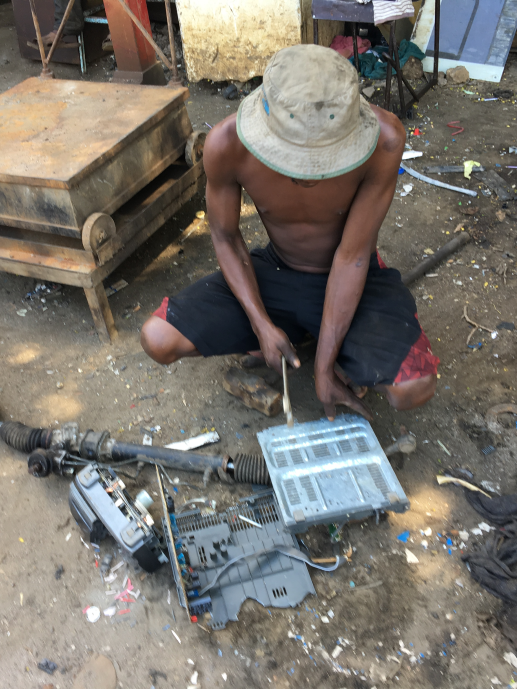Recent WHO projections forecast that NCDs will, by 2030, overtake infectious diseases as the major cause of all deaths in SSA, marking a major epidemiological transition in the sub-continent. Already, there is enough evidence linking the exposure to environmental elements such as chemicals, waste, tobacco smoke, and air pollution with NCDs. As the continent is currently experiencing rapid urbanization, but relies on outdated technology in transport and industry, and in environmental monitoring, as well as poor infrastructural planning, air and environmental pollution emerge as mounting risk factors for NCDs.
A wide range of sectors contribute to environmental pollution in Sub Saharan Africa, such as fuels in the industry and domestic sectors, transport (cars, busses, trucks) and power generation; industrial facilities, oil refinery, cement production; agricultural productivity and animal waste; burning of firewood and charcoal, also making charcoal. All these sectors are crucial for people’s lives on the continent, yet they generate a growing amount of environmental harm, and lasting legacies of pollution.

Urban pollution and its potential health effects are of rising concern to the growing urban populations on the continent, yet possibilities for mitigating the effects of pollution, and opportunities for political influence and activism are as yet limited. One challenge for civic engagement and activism, in Africa as much as elsewhere in the world, apart from the obvious problem of political and economic interests in particular industries, is the difficulty to prove causal links between pollution and health effects, and to attribute responsibility for mitigation.
The challenges of urban pollution in eastern Africa is further compounded by national and regional regulations, and above all by the lack of protective and monitoring capacity that could be used to enforce existing regulation, to inform policy and technological adaptations, and political and social movements towards improved urban health. Research in this TC could be categorized in different levels and may focus on various industries, sites or specific cases. They may include but are not limited to the following:
- Institutional and community level understanding of different forms of pollution
- What is the knowledge about pollution (and emission levels) at different societal levels?
- What practices contribute, in a site, to pollution, and how are these locally discussed?
- What concerns exist around air pollution, at national, regional or community levels?
- Do these concerns trigger local mitigation practices or social/political activism?
- Policy and regulations around air and environmental pollution
- What policies and regulations regulate air pollution?
- How are such policies formulated and implemented and based on what standards?
- What are the challenges and opportunities in implementing these policies, and what are the gaps in policies and what areas may need improvements?
- What technical resources/expertise inform policy process, monitoring and enforcement?
- Who are the actors and what sectors and/or individuals are left out in the process of policy and regulation engagement?
- Industrial and workplace exposure
- Which industries contribute particularly to exposure – of workers or neighbourhoods?
- What is the prevailing discourse/awareness and concerns exist among workers/citizens/experts/officials about these issues?
- What monitoring and regulation are in place, and by whom and how are they enforced?
- What forms of mitigation measures are in place to ensure compliance with the regulations and how can they be improved?
- What forms of activism, by trade unions, workers and civil society are there in relation to these concerns?
If you want to discuss this topic, please get in touch with: Peter.mangesho@medisin.uio.no
